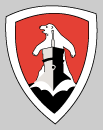U 209
|
U 209 ( previous / next - all submarines ) |
|
|---|---|
 Coat of arms of Brno, godfather city of the boat |
|
| Type : | VII C |
| Field Post Number : | 30 549 |
| Shipyard: | Germania shipyard in Kiel |
| Construction contract: | October 16, 1939 |
| Build number: | 638 |
| Keel laying: | November 28, 1940 |
| Launch: | August 28, 1941 |
| Commissioning: | October 11, 1941 |
| Commanders: |
Captain Heinrich Brodda |
| Flotilla: |
|
| Calls: | 6 activities |
| Sinkings: |
2 ships (356 t) 2 barges (1,000 GRT) |
| Whereabouts: | Sunk on May 7, 1943 |
U 209 was a German type VII C submarine . This class of submarines was called "Atlantic boat" because of its properties. U 209 was used by the Navy during the submarine war in convoy battles in the North Sea and the North Atlantic .
Technical specifications
Although the Germania shipyard in Kiel was mainly commissioned by the Reichsmarine with the construction of capital ships, submarines had been manufactured on a small scale and partly under secrecy since 1935, also for export. When the Kriegsmarine expanded its submarine building program after the outbreak of war, this shipyard was scheduled to produce 42 boats a year. However, this margin could never be reached. In 1941, the Germania shipyard completed nine other type VII C boats in addition to the U 209 . A submarine of this class had a displacement of 761 cubic meters above and 865 cubic meters under water. The diesel engine guaranteed an overwater speed of 17 knots , that is 31.5 km / h. When diving, the two electric motors enabled speeds of up to 7.6 kn, i.e. 14 km / h. A VII C had a length of 67.1 meters, a width of 6.2 meters and a draft of 4.8 meters. Usually there were 44 men on board. U 209 carried the emblem of the 11th U-Flotilla and the coat of arms of its sponsored city Brno on the tower next to the boat coat of arms, which represented a submarine keel crushing a lion .
commander
Heinrich Brodda was born on May 9, 1903 in Altenessen and joined the Reichsmarine in 1921. At the beginning of the war, he initially served on the Lech submarine tender . In January 1940 Heinrich Brodda was promoted to lieutenant captain and was given command of the clearing boat accompanying ship Nettelbeck . Then he commanded the fleet companion F6 . In the summer of 1941 he completed his submarine training and his submarine commanding course. Following the building instruction , Heinrich Brodda took over command of U 209 , which he put into service on October 11, 1941.
Commitment and history
After commissioning, the boat was part of the 6th U-Flotilla as a training boat and was stationed in Danzig . Until February 1942, Commander Brodda undertook training trips with the boat in the Baltic Sea to train the crew. At the end of March 1942 he transferred the boat to the Norwegian submarine base in Kirkenes . From here, the boat set out on an operation on April 7, in the course of which it was used against the Northern Sea Convoys QP 10 and PQ 14 . This trip ended on April 20th in Bergen . From here, undertook commander Brodda two more patrols in the North Sea. In July U 209 returned to Kirkenes. From here the boat operated in August in the Arctic Ocean, on Kara Street and off Novaya Zemlya . On this patrol, Commander Brodda attacked a Soviet escort who was transporting political prisoners with artillery. 305 prisoners were killed in this attack. After a transfer trip , the boat was stationed in Narvik , from where Commander Brodda led an enterprise in the North Atlantic. In December 1942 he transferred the boat back to Kiel, from where U 209 set off on April 6 for his last venture.
Sinking
On May 4, a recessed Catalina flying boat , which belonged to secure the convoy ONS 5, U 209 with four flat set depth charges .
literature
- Clay Blair : The Submarine War. Volume 1: The Hunters. 1939-1942. Heyne, Munich 1998, ISBN 3-453-12345-X .
- Rainer Busch, Hans-Joachim Röll: The submarine war 1939-1945. Volume 1: The German submarine commanders. ES Mittler und Sohn, Hamburg et al. 1996, ISBN 3-8132-0490-1 .
- Jürgen Rohwer , Gerhard Hümmelchen : Chronicle of the naval war 1939-1945. Manfred Pawlak Verlagsges., Herrsching 1981, ISBN 3-88199-0097 .
Remarks
- ^ Georg Högel: Emblems, coats of arms, Maling's German U-Boats 1939-1945. 5th edition. Koehlers Verlagsgesellschaft mbH, Hamburg 2009, ISBN 978-3-7822-1002-7 , SS 74
- ↑ such a sponsorship included that the respective city gave the submarine special provisions or other presents and invited the crew to vacation.
- ↑ Rainer Busch, Hans-Joachim Röll: The U-Boat War 1939-1945. Volume 2: U-boat construction in German shipyards. ES Mittler und Sohn, Hamburg et al. 1997, ISBN 3-8132-0512-6 , p. 459.
- ^ Bernard Ireland: Battle of the Atlantic. Naval Institute Press, Annapolis MD 2003, ISBN 1-59114-032-3 , p. 135.
